PESTS AND DISEASES OF FORESTRY IN NEW ZEALAND
Small Forests & Woodlots
A guide to conducting forest health assessments and sampling:
BUDS and FOLIAGE
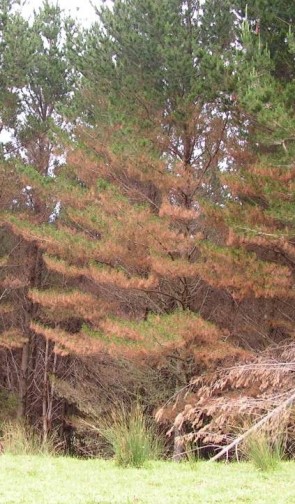
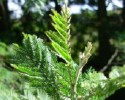 Symptoms on buds and foliage caused by pathogens
Symptoms on buds and foliage caused by pathogens
Foliar disorders are amongst the most commonly encountered problems in any plantation.
A number of agents cause off-colour or casting foliage and it is important to distinguish between a possible serious pathogen and environmental issues.
If symptoms involve banding, cast, rapid colour changes, or eruptions on the surface of leaves or needles, they are likely to be caused by a biotic agent. Most foliar disorders will just affect the needles or leaves, although a number do also attack shoots and stems such as mycospharella leaf spot on eucalyptus.
Taking a sample
Collect a good handful of foliage ensuring both 'healthy' and unhealthy material is included. Some pathogens will only produce spores once the foliage is dead.
Generally, collecting foliage from the ground should be avoided, due to con-tamination. If litter is collected, place it in a separate bag. Keep cool and send to a diagnostic laboratory immediately or store in a fridge until ready.
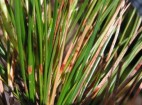
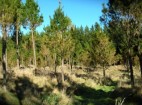
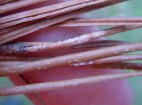
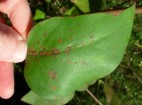
Symptoms on buds and foliage caused by insects
Insect damage is generally more common on plantation hardwood species, particularly eucalyptus and acacia.
Chewing or browse
Any obvious physical damage to foliage and buds. Including holes, rasping, ragged edges will indicate insect attack.
Sap sucking insects
Black sooty mould indicates sugary exudates from sap sucking insects such as aphids and scale. Other symptoms include leaf spots and yellowing of foliage.
Leaf miners
On current plantations species these insects cause leaf mines, blisters and can also bore into shoots causing die-back and hedging.
Sampling
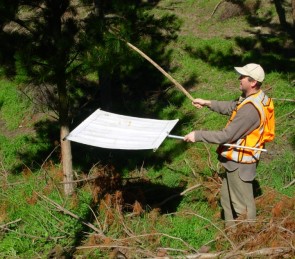
For sampling both hard insects (beetles, etc) and soft insects (aphids, caterpillars, etc). These can be placed in a plastic tube with a bit of tissue as packing, pierce the lid for ventilation.
For smaller foliage inhabiting insects, collect a largish sample of foliage with insects attached and place in a plastic bag (don't crush).
'Beating'
This is a tried and proven method for finding, sampling or collecting foliage inhabiting insects. Simply hit a branch with a stick above an upside down umbrella or framed cotton sheet. After a moment the sheet can be carefully turned upside down removing plant debris but leaving live insects gripping to the cloth. Consistent finds of any one kind of insect in is a good indication of a potential pest.
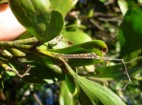
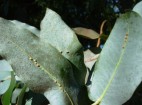
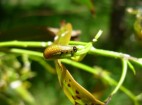
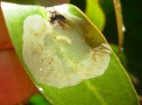
See also: Identification of insects commonly found in foliage beating samples

 Farm Forestry New Zealand
Farm Forestry New Zealand

